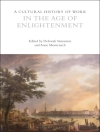Women, Mysticism, and Hysteria in Fin-de-Siècle Spain argues that the reinterpretation of female mysticism as hysteria and nymphomania in late nineteenth- and early twentieth-century Spain was part of a larger project to suppress the growing female emancipation movement by sexualizing the female subject. This archival-historical work highlights the phenomenon in medical, social, and literary texts of the time, illustrating that despite many liberals’ hostility toward the Church, secular doctors and intellectuals employed strikingly similar paradigms to those through which the early modern Spanish Church castigated female mysticism as demonic possession.
Author Jennifer Smith also directs modern historians to the writings of Emilia Pardo Bazán (1851-1921) as a thinker whose work points out mysticism’s subversive potential in terms of the patriarchal order. Pardo Bazán, unlike her male counterparts, rejected the hysteria diagnosis and promoted mysticism as a path for women’s personal development and self-realization.
Inhoudsopgave
Introduction
Chapter 1: Women and the Deployment of Sexuality in Nineteenth-Century Spain
Chapter 2: Women, Mysticism, and Hysteria in Fin-de-Siècle Spain
Chapter 3: Eduardo López Bago’s Hysterics, Tribades, and Nymphomaniacal Nuns
Chapter 4: La Regenta and the Cura Trilogy: Novels in Dialog
Chapter 5: Bucking the Trend: Emilia Pardo Bazán on Hysteria and Mysticism in Women
Conclusion
Notes
Bibliography
Index
Over de auteur
Jennifer Smith is an associate professor of Spanish and chair of the Department of Languages, Cultures, and International Trade at Southern Illinois University.












